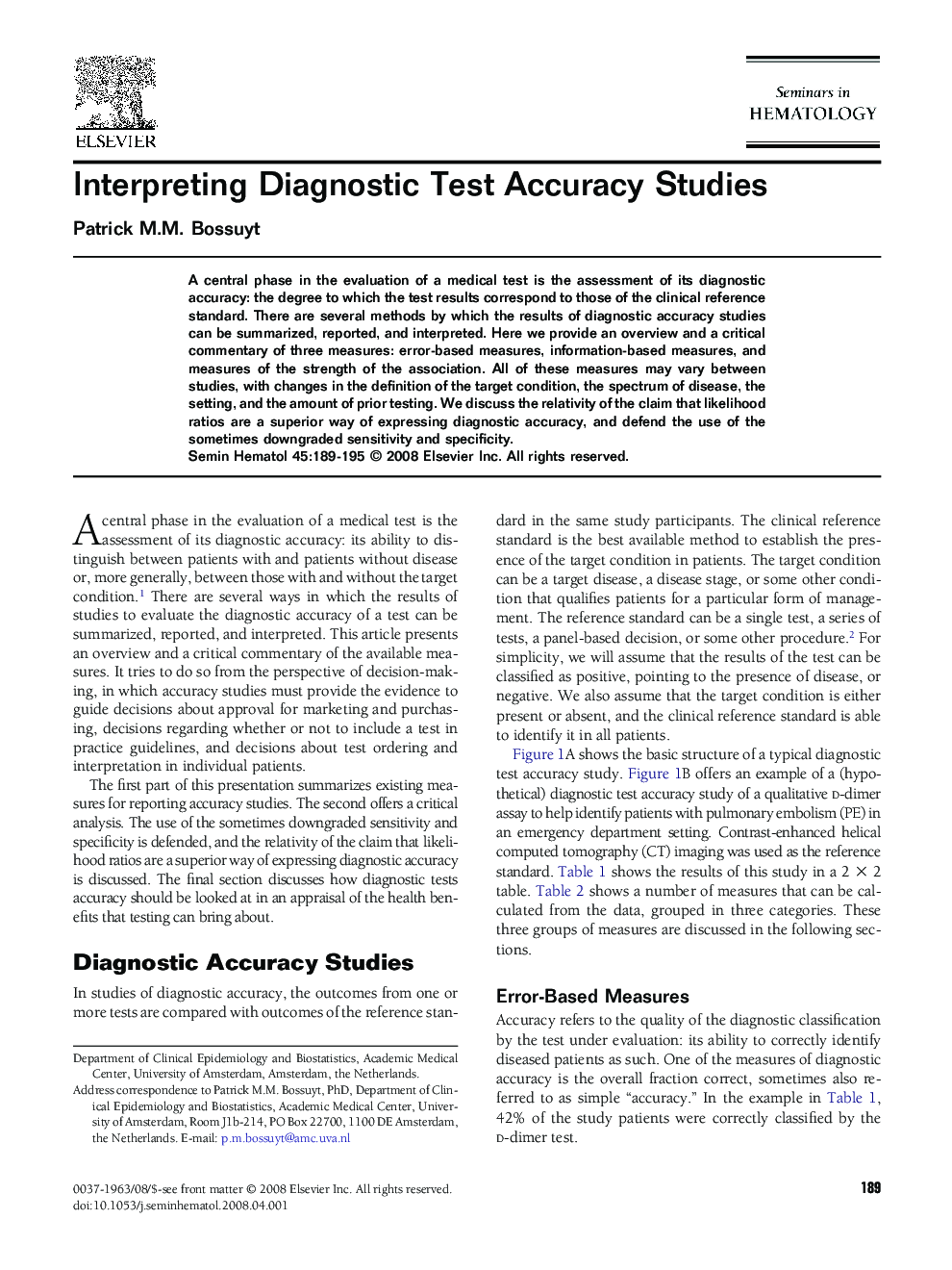| Article ID | Journal | Published Year | Pages | File Type |
|---|---|---|---|---|
| 3333639 | Seminars in Hematology | 2008 | 7 Pages |
A central phase in the evaluation of a medical test is the assessment of its diagnostic accuracy: the degree to which the test results correspond to those of the clinical reference standard. There are several methods by which the results of diagnostic accuracy studies can be summarized, reported, and interpreted. Here we provide an overview and a critical commentary of three measures: error-based measures, information-based measures, and measures of the strength of the association. All of these measures may vary between studies, with changes in the definition of the target condition, the spectrum of disease, the setting, and the amount of prior testing. We discuss the relativity of the claim that likelihood ratios are a superior way of expressing diagnostic accuracy, and defend the use of the sometimes downgraded sensitivity and specificity.
